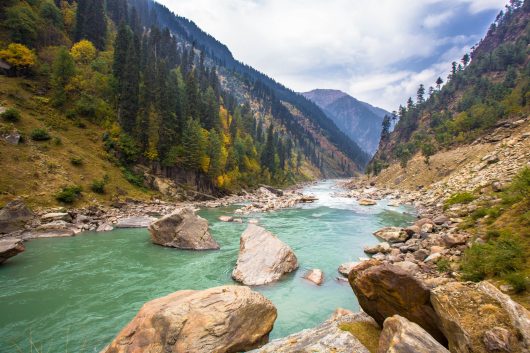The Development of Sustainable Agriculture in Pakistan

Since gaining independence from Britain in 1947, the development of sustainable agriculture in Pakistan has greatly improved. Agriculture currently employs 47 percent of the country’s labor force and comprises 24 percent of its GDP.
Now, in 2018, the country is self-sufficient agriculturally and exports large quantities of wheat, milk, rice and cotton for profit; however, the country could improve in the practice of sustainable agriculture.
The Goal of Sustainable Agriculture in Pakistan
The goal of sustainable agriculture is to perform human agricultural activities that take into consideration the earth’s ecosystems. In other words, an understanding of Pakistan’s complex terrains are required so that the country can remain self-sufficient without depleting resources or putting the land at risk.
Pakistan’s Main Obstacle: Energy Scarcity
The main obstacle regarding sustainable agriculture in Pakistan is the issue of energy scarcity. In 2016, Pakistan was the seventh-largest energy consumer in the Asia Pacific. The majority of fossil fuel consumption in Pakistan is related to industrial and domestic purposes, but Pakistan relies on a fossil-fuel based energy for agricultural production. Fossil fuel energy consumption in Pakistan increases at an average annual rate of .36 percent.
The burning of fossil fuels leads to harmful greenhouse gas emissions and significant economic effects. Studies demonstrate that the greenhouse gasses are not only poor for the environment, but they also have a negative impact on the agricultural production of cotton, wheat and rice: three of the most traded and produced resources in Pakistan.
Potential for Long-Term Sustainability
The adoption of renewable energy sources could increase the long-term sustainability of Pakistan’s agricultural production by providing energy that is cheaper, renewable and less harmful to the environment. Currently, some of the most popular alternative energy innovations among the Pakistani government is solar powered water pumps and irrigation systems.
Solar Power
Solar power is an unlimited resource and is therefore considered to be the most reliable type of alternative energy. Solar powered water pumps can improve sustainable agriculture in Pakistan in the following ways:
- By converting Pakistan’s diesel-run water pumps to solar power, farmers will save money on monthly diesel fuel bills, utilize a resource that is more environmentally friendly and decrease the ramifications of diesel fuel to the pollution of air, water and land.
- Solar pump systems are more economically sustainable. The pumps can survive most poor weather conditions, have a low maintenance cost and can last anywhere from 25 to 30 years.
- Pakistan has a complex geography — the climate and soil diversity results in differing vegetation between Pakistan’s regions. As a result, installing water pumps and irrigation systems can prove difficult in certain regions; however, the solar pumps can be installed and operated in all of the different terrains in Pakistan.
Recently, the Pakistani government approved the use of rooftop solar installations and reduced import taxes on solar equipment and, as of 2016, 1.2 million solar water pumps were installed in Pakistan. While the government is still looking for ways to fund the solar powered pumps for public use, it seems that the innovation could greatly increase the possibility of true, sustainable agriculture in Pakistan.
– Danielle Poindexter
Photo: Flickr
